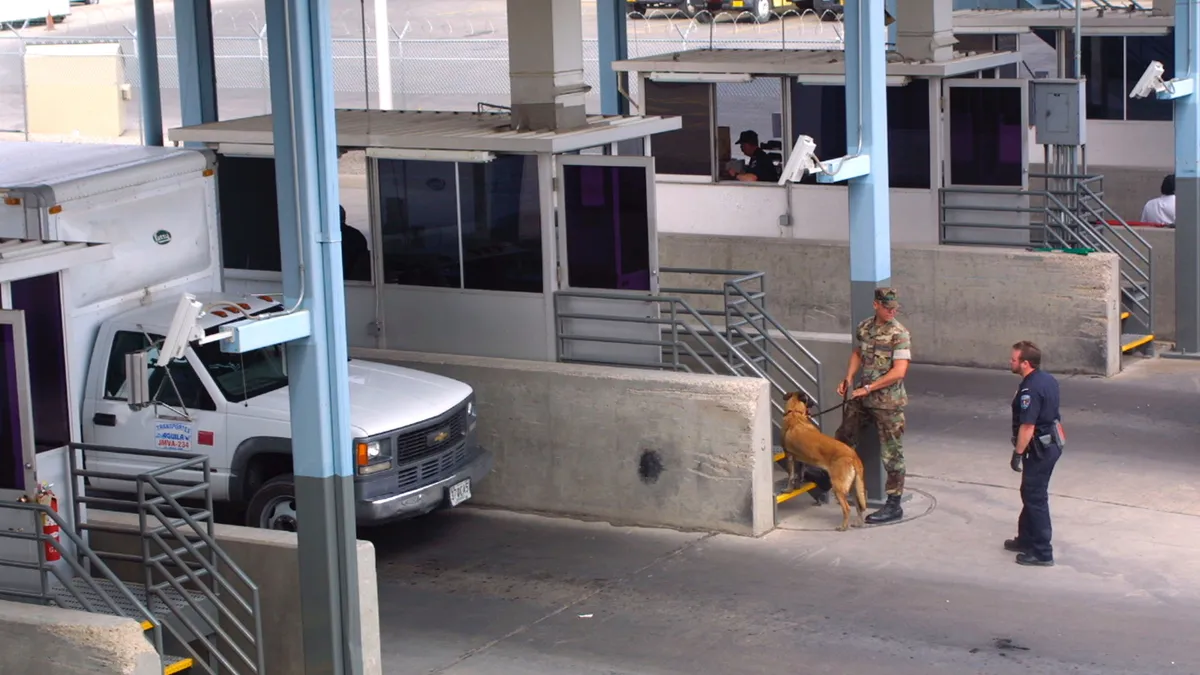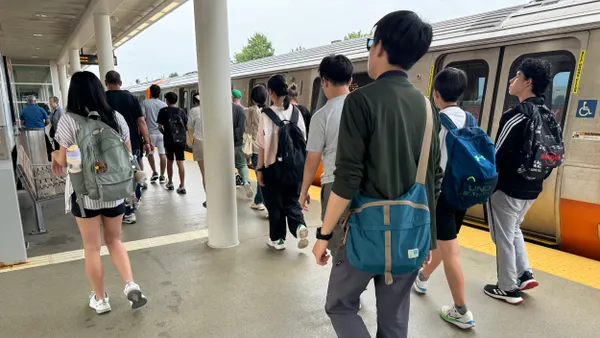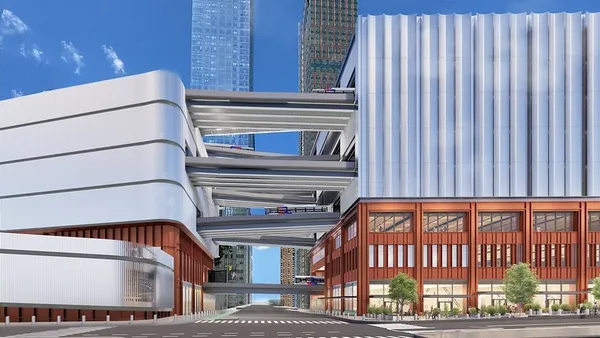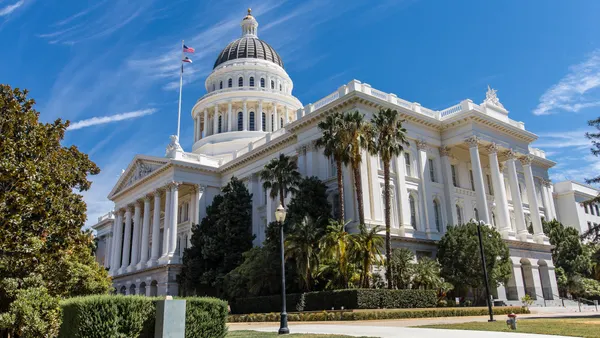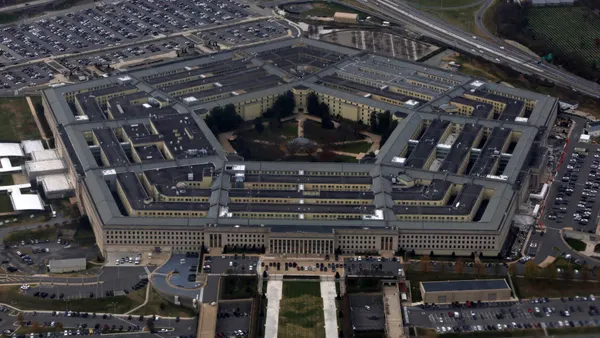Dive Brief:
- The General Services Administration plans to upgrade 38 federal land ports of entry along the country’s northern and southern borders using $1 billion in Inflation Reduction Act and Infrastructure Investment and Jobs Act funds, the agency said Thursday.
- The goal is to modernize the facilities while boosting domestic clean manufacturing and sustainable technologies. There’s roughly $850 million for low-carbon materials and $60 million for emerging and sustainable technologies.
- The money will be used to convert buildings to electric energy, update water systems and windows, pave with low-carbon concrete and otherwise update facilities with greener materials.
Dive Insight:
Texas Gov. Greg Abbott is building border wall projects in his state and pushing the Biden administration to do more of the same, as Texas and the feds grappled over the issue in recent weeks. On March 8, U.S. District Judge Drew Tipton of the Southern District of Texas issued a temporary injunction that temporarily bars the federal government from redirecting $1.4 billion that Congress allocated under former President Donald Trump for a U.S.-Mexico border barrier, as the White House sought to do.
During his election campaign, Biden vowed to stop all wall construction between the U.S. and Mexico amid concerns about its cost, lack of effectiveness, environmental degradation and danger to migrants. Last year, Biden said his administration is required by law to continue certain wall construction because Congress appropriated money for it.
Still, while it doesn’t fund walls specifically, the IIIJA designates $3.4 billion to build and modernize land ports and U.S. Customs and Border Protection infrastructure on the country’s borders with Mexico and Canada. The GSA said it chose these land port projects based on each facility’s age and the U.S. Department of Homeland Security Customs and Border Protection’s security needs.
Of the 38 projects, 23 entail electrifying building operations. Some of the biggest projects include:
- The 28-acre Bridge of the Americas Land Port of Entry separating El Paso, Texas, and Ciudad Juarez, Mexico, which processes inbound and outbound commercial and non-commercial vehicles as well as pedestrians. The $650 million to $700 million project would help the CBP handle an increased volume of users. Construction is expected to start in May 2026 and be substantially complete by June 2029.
- The Raul Hector Castro Land Port of Entry project in Douglas, Arizona, which would overhaul a 4.8-acre CBP facility. The $165 million to $185 million project would modernize and expand the existing facility for pedestrians and non-commercial traffic, while commercial activities will move to a new stand-alone facility called Douglas Commercial. Construction will begin in fall 2028, with substantial completion expected in 2031.
- The Douglas Commercial Land Port of Entry, also in Douglas, Arizona, which is the corresponding new 80-acre, $170 million to $220 million facility for commercial vehicles. Construction is expected to start in 2025 and be complete in 2028.
- The 17.8-acre Calexico West Land Port of Entry in California, which is the main border crossing linking the Imperial Valley agricultural industry to Baja California, Mexico. About $400 million in projects include a new administration building and more inspection facilities, booths and vehicle lanes.
In addition to these modernization projects, GSA is investing another $100 million in low-carbon materials for 13 land port paving projects.
Greener procurement
The Biden administration is shifting some of the federal government’s massive purchasing power toward low-carbon and U.S.-made materials: through the IIJA’s Build America, Buy America Act, which built on existing Buy America mandates, and the Buy Clean Initiative, by executive order.
BABA requires all manufactured products, construction materials and iron and steel used in federally funded infrastructure projects to be made in America, while Buy Clean directs the federal government to green its procurement practices and take other actions to achieve a net-zero emissions economy by 2050.
These land port projects will boost domestic manufacturing as well as improve security, GSA Administrator Robin Carnahan said in the release.
“By incorporating clean construction materials and clean energy technologies into these projects, we’re not only supporting bringing these border stations into the 21st century, we’re also supporting the clean energy industries that will lead our economy in the future,” said Carnahan.



